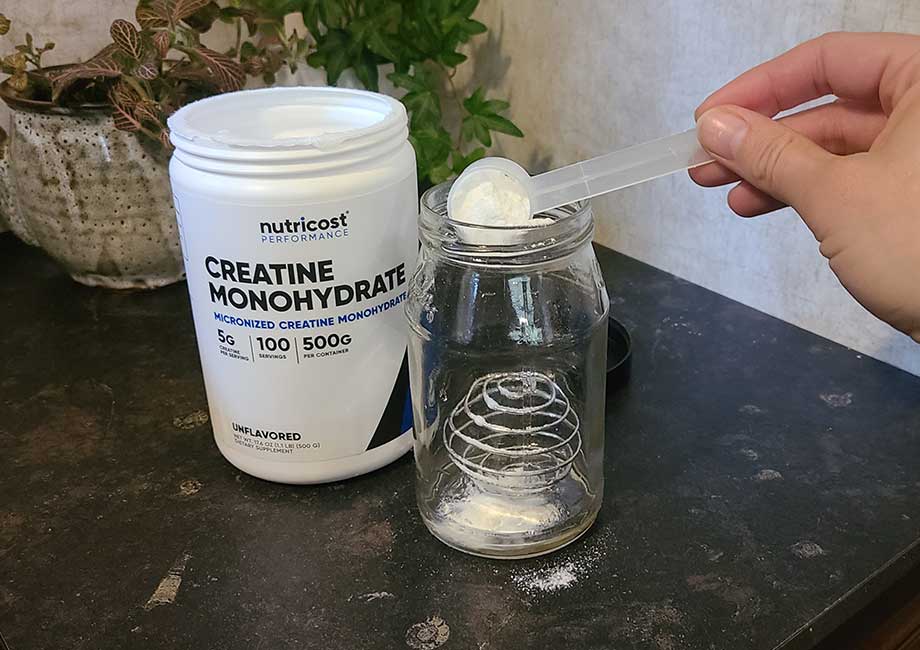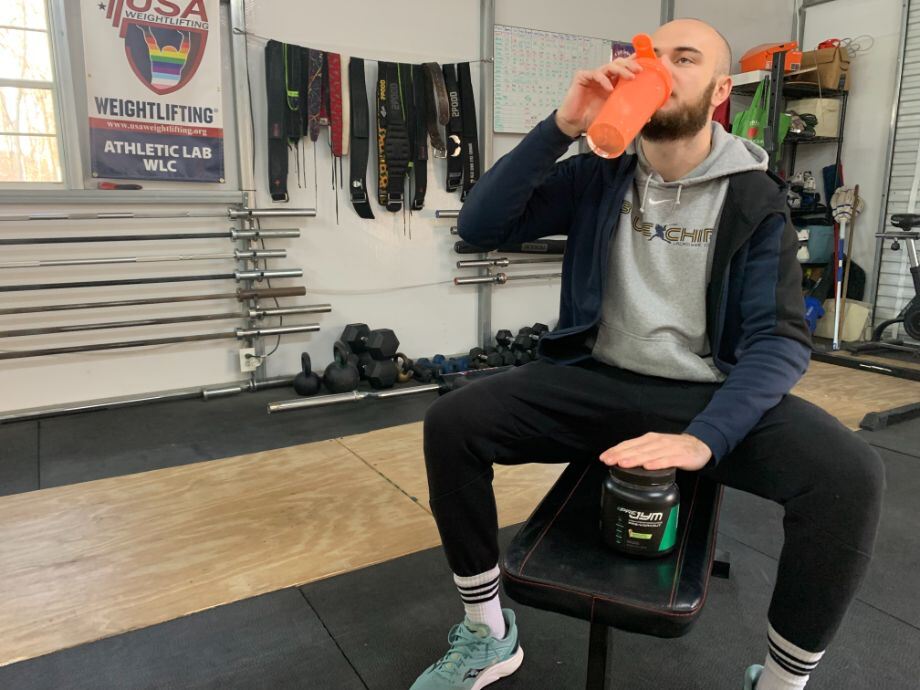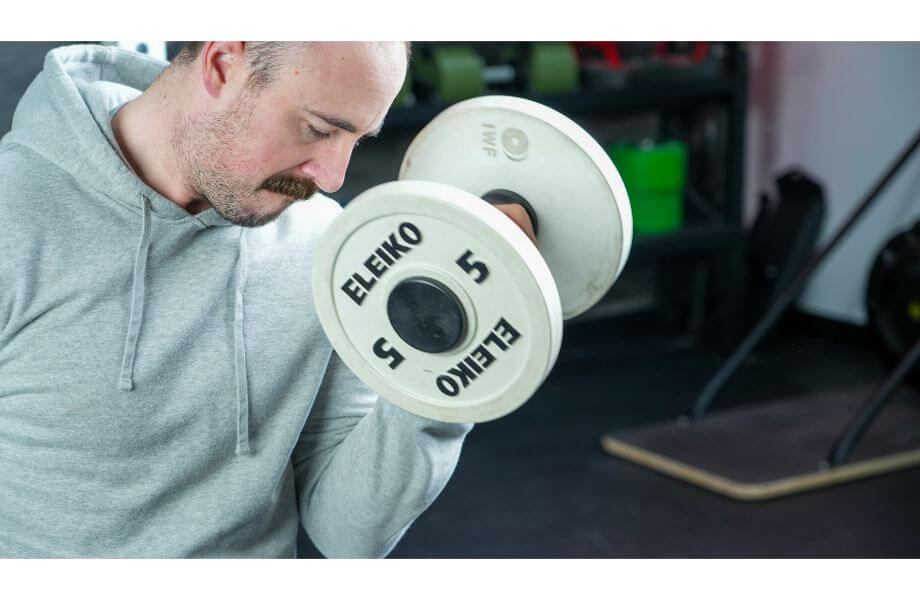Creatine is a popular supplement taken by both seasoned bodybuilders and exercise beginners. Based on the fact that you’re reading this article, you’re probably interested in taking this dietary supplement to improve your performance in the gym, but need to know how to take creatine the right way.
RELATED: What Is Creatine?
It’s important to have realistic expectations of what you can expect from a supplement, and that’s exactly what we’ll cover below. We’ll explain the recommended method of taking creatine, the different types of creatine, when to take it, its benefits, and any risks associated with creatine supplementation.
Medical disclaimer: This article is intended for educational and informational purposes only. It is not intended as a substitute for medical advice. For health advice, contact a licensed healthcare provider.
How To Take Creatine
Loading Phase
The first phase of a creatine supplementation regimen is a short-term loading phase. Without supplementation, muscles are normally about 60-80% saturated with creatine in people who get 1 to 2 grams of creatine per day through animal-based foods like red meat and poultry.

The purpose of the loading phase is to completely saturate the skeletal muscle cells with as much creatine as they can possibly hold, providing the most benefits for exercise performance.
The most effective dosing guidelines1 for creatine loading are to take 5 grams of creatine (about 0.3 grams per kilogram of body weight) four times each day for a total daily dose of 20 grams. This amount is taken for 5 to 7 days.
A more gradual approach that provides similar muscle saturation is to take 3 grams of creatine daily for 28 days.
Maintenance Phase
After you’ve sufficiently loaded the muscle with creatine, it’s time to move to the maintenance phase. As you may have already guessed, the purpose of the maintenance phase is to keep creatine levels as high as possible over the long-term. A maintenance dose is taken for as long as you want the benefits of creatine, potentially lasting years.
Fortunately, you don’t have to take as much creatine during the maintenance phase as you did during loading. Research1 has supported taking 3 to 5 grams of creatine per day for maintenance, with larger athletes requiring up to 5 to 10 grams each day to account for their higher lean body mass.
RELATED: Best Creatine Supplements
How Much Creatine To Take
As discussed above, the amount of creatine to take on any given day will vary based on your chosen creatine supplementation strategy and the phase of that strategy, if applicable, that you’re currently in.
If you’re confused by all these numbers, we’ve got you covered! The chart below shows how much creatine to take based on your chosen supplementation strategy.
Note: Pay attention to the amount of creatine present in each scoop or capsule. Many serving sizes provide a standard dose of 5 grams, but the number of scoops or capsules that make up this dose can vary per product.
Creatine Supplementation Strategies and Dosing
| Morning | Afternoon | Evening | Bedtime or Pre-workout | DAILY TOTAL | |
| Loading Phase (5-7 days) | 5g | 5g | 5g | 5g | 20g |
| Maintenance Phase | 3-5g* | 3-5g | |||
| Consistent Dosing (for at least 28 days) | 3g* | 3g |
*Can be taken any time of day
Benefits of Creatine
Creatine is an organic acid made from three amino acids: glycine, arginine, and methionine. It’s most helpful for improving performance in short, high-intensity exercise like heavy weight-lifting or sprinting. To do these exercises most efficiently, the body requires energy in the form of adenosine triphosphate (ATP), a molecule that creatine (stored as creatine phosphate in muscle) helps the body regenerate more quickly.
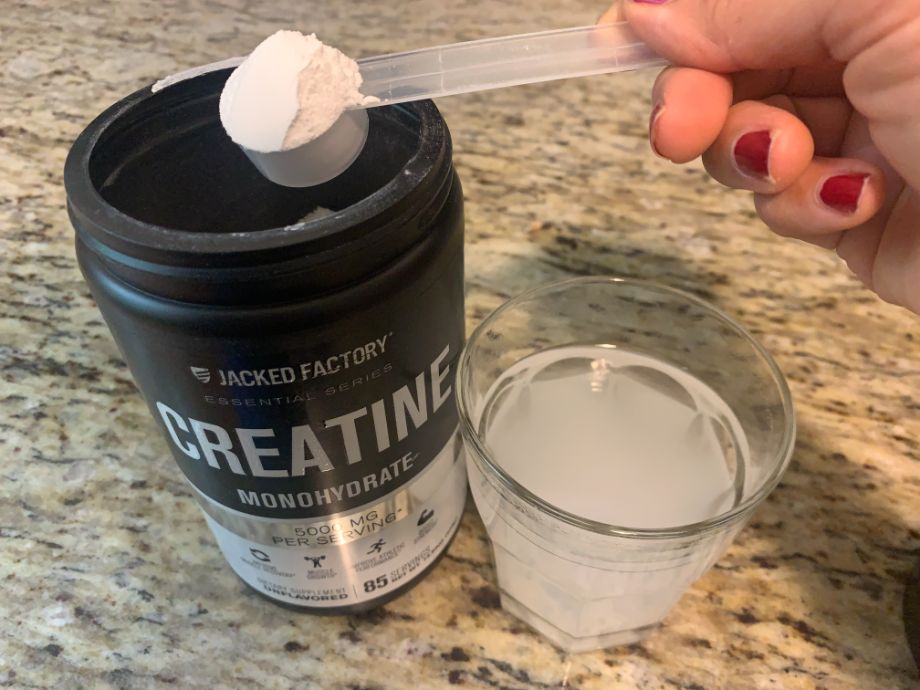
Practically, this translates to the ability to lift a few extra reps during a resistance training session. Sprinters can experience faster single sprints and better performance of multiple sprints.
The performance-related benefits of creatine include:
- Increased exercise volume per training session
- Improved muscle strength
- Increased muscle growth
- Faster recovery after workouts
- Injury prevention
Is creatine equally beneficial for everyone? Maybe not. Research in women is limited, but the International Society of Sports Nutrition1 suggests that creatine supplementation may not be as effective in improving muscle mass and strength in women as it is in men.
RELATED: Best Creatine for Women
The benefits of creatine may depend on how much you have stored in your muscles at baseline. Because vegetarians and vegans have lower muscle creatine stores5 than omnivores, they may benefit even more from creatine supplementation.
Types of Creatine
As with many supplements, the type of creatine you take matters. Not all creatine supplements are created equal, so it’s important to be well-informed on the best kinds.
Forms of Creatine Supplements
Creatine supplements come in two main forms: pills and powders.
Creatine pills offer the most convenient method of supplementation, with the amount of creatine in each pill already measured out and standardized. They come in both tablet and capsule form. Powders, on the other hand, require you to measure them out yourself and mix them with a liquid.
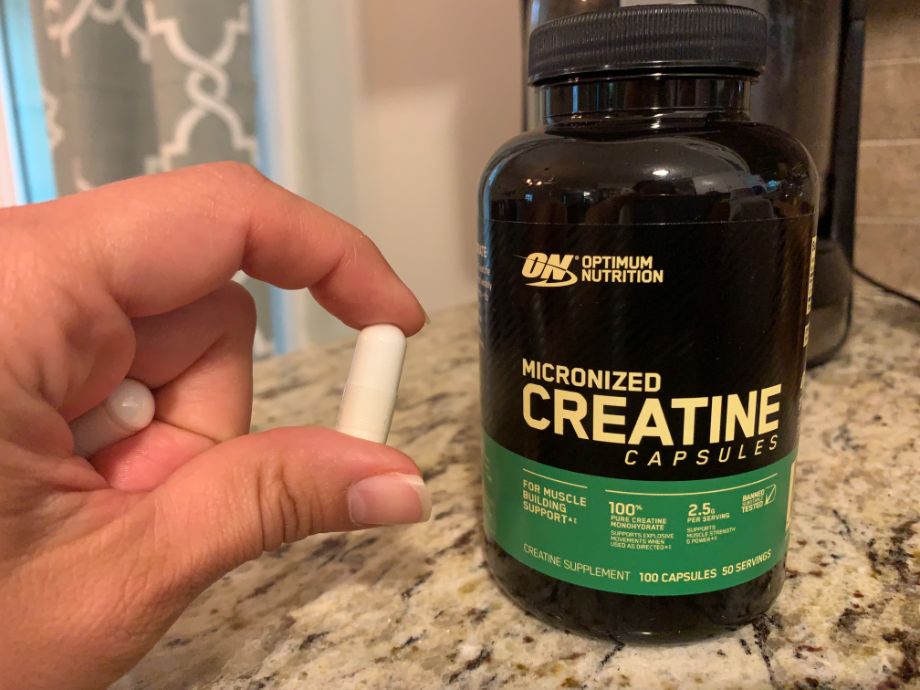
Pills and powders are both effective ways of increasing muscle creatine stores. The main difference is that powders will be absorbed into the bloodstream more quickly. That said, it isn’t clear whether the speed of absorption makes much of a difference in terms of athletic performance, so there’s no need to base your decision primarily on this factor.
A practical bonus of creatine powders is that they tend to be more affordable than pills.
Types of Creatine Supplements
There are many types of creatine supplements on the market with varying degrees of efficacy. Let’s discuss the ones you’ll see most frequently.
RELATED: Creatine vs. Pre-workout: Should You Take Both?
Creatine monohydrate is by far the most well-studied type of creatine with research supporting its benefits for performance. When you read about the benefits of creatine supplements, you can assume that they’re talking about creatine monohydrate. In addition to being the most researched, it’s usually the cheapest, as well.
Other types of creatine include:
- Creatine hydrochloride
- Creatine magnesium chelate
- Creatine citrate
- Creatine pyruvate
- Creatine malate
- Creatine nitrate
- Creatine ethyl ester
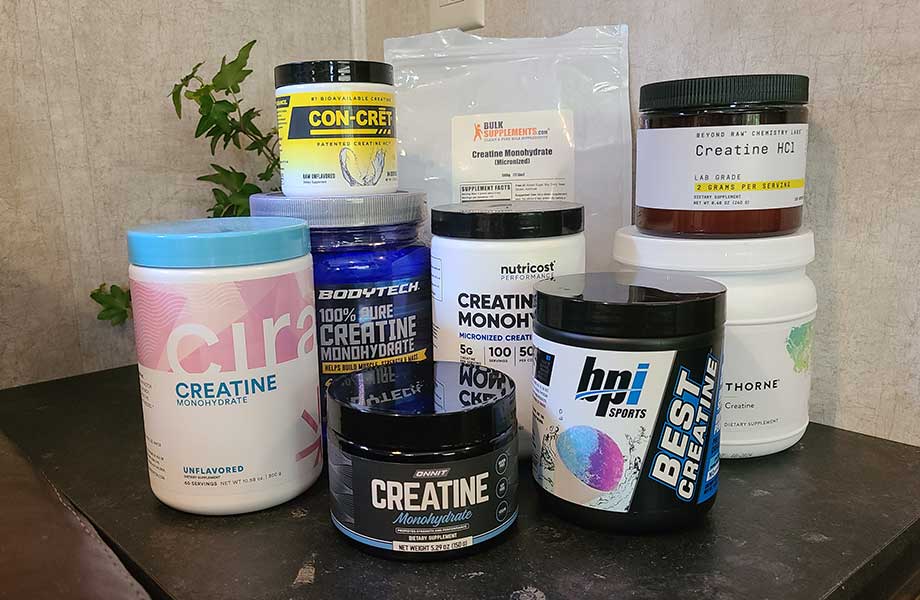
According to a September 2022 systematic review2 published in the Journal of Strength and Conditioning Research, however, none of these alternatives have been shown to be as effective as creatine monohydrate for improving exercise performance. In fact, it isn’t even clear if they’re more effective than a placebo.
When to Take Creatine
While it’s been theorized that taking creatine before a workout could drive more of it into the muscle via increased blood flow, the best time to take creatine is still unclear.
This was the conclusion of two separate reviews, one published in 2021 in Nutrients3 and the other published in Frontiers in Sports and Active Living4 in 2022. Both noted that there isn’t enough high-quality evidence on whether taking creatine pre-workout or post-workout is better and that the focus should be on following recommended loading and maintenance phase dosing.
Also noted was that even if the timing of creatine ingestion does matter, it would likely only play a role during the loading phase and wouldn’t have much impact on performance once the muscles are already saturated with creatine.
RELATED: How Long Does Creatine Stay in Your System?
Side Effects of Creatine
Fortunately, creatine is considered a safe and effective supplement by many leading health authorities. The International Society of Sports Nutrition1 has concluded that creatine supplementation of up to 30 grams per day for 5 years isn’t associated with adverse effects in healthy people.
One reported side effect of creatine is weight gain, likely due to increased water retention in the muscle. This weight gain is fairly small, about 1 to 2.2 pounds. Over time, weight may increase as creatine helps you build muscle.

Some people have also reported unpleasant gastrointestinal side effects such as stomach upset, diarrhea, and bloating, but a 2008 randomized controlled trial published in Research in Sports Medicine6 only noted these adverse effects when taking 10 grams of creatine at once.
RELATED: Can You Dry Scoop Creatine?
How to Take Creatine: Final Thoughts
Creatine is a safe, well-researched supplement effective for improving exercise performance. Keep the following important concepts in mind as you consider taking a creatine supplement:
- Creatine monohydrate is the most effective and well-researched type of creatine
- Creatine is most effective for short, high-intensity anaerobic exercises
- Creatine should first be taken in a loading phase to saturate the muscle
- Creatine loading is followed by a maintenance phase to keep muscle creatine levels elevated long-term
- The time of day you take creatine (or before versus after a workout) doesn’t seem to matter much
- Gastrointestinal side effects are rare, but may occur with doses over 10 grams
Creatine isn’t a magic bullet, but it can help you build more muscle and strength over time by slightly increasing the number of reps you can do every time you work out.
How to Take Creatine: FAQs
What is the best way to take creatine?
Creatine supplementation should be split into two phases: the loading phase and the maintenance phase. During the loading phase, it’s recommended to take 5 grams of creatine four times each day for 5 to 7 days (20 grams total per day). After this, the maintenance phase involves taking 3 to 5 grams every day.
When should I take creatine for the best results?
Currently, there isn’t a clear answer for whether it’s best to take creatine before, during, or after a workout, or if timing even matters. Experts suggest focusing on taking the proper doses for loading and maintenance every day.
Do you take creatine before or after a workout?
It’s up to you—creatine can be taken before or after a workout. It isn’t clear whether either of these methods is better for improving exercise performance, so choose the most convenient option for your schedule.
What is the best way to take creatine before a workout?
Research suggests that the timing of when you take creatine doesn’t seem to make much difference in improving exercise performance.
Creatine in powder or pill forms are both effective, so it’s up to you which form you prefer. Pills may be more convenient for traveling, while creatine powder mixed with a liquid can provide helpful hydration before working out.
How do you properly drink creatine?
A typical 3 to 5-gram dose of powdered creatine can be mixed with 8 ounces of water, coffee, or fruit juice or blended in smoothies and protein shakes.
How to use creatine for beginners?
The simplest option for beginners is to take 3 grams of creatine daily. For faster results, you can begin with a loading phase, taking 5 grams of creatine four times a day for 7 days. This is followed by a long-term maintenance phase where 3 to 5 grams of creatine are taken daily.
What not to do while taking creatine?
Avoid dry-scooping creatine, as this might cause stomach cramps in some people. Avoid single doses over 10 grams, which can also cause digestive upset. It’s also best to avoid less well-researched forms of creatine—stick to creatine monohydrate for optimal results.
These statements have not been evaluated by the Food and Drug Administration. This product is not intended to diagnose, treat, cure, or prevent any diseases.
References
- Kreider RB, Kalman DS, Antonio J, Ziegenfuss TN, Wildman R, Collins R, Candow DG, Kleiner SM, Almada AL, Lopez HL. International Society of Sports Nutrition position stand: safety and efficacy of creatine supplementation in exercise, sport, and medicine. J Int Soc Sports Nutr. 2017 Jun 13;14:18. doi: 10.1186/s12970-017-0173-z. PMID: 28615996; PMCID: PMC5469049.
- Fazio C, Elder CL, Harris MM. Efficacy of Alternative Forms of Creatine Supplementation on Improving Performance and Body Composition in Healthy Subjects: A Systematic Review. J Strength Cond Res. 2022 Sep 1;36(9):2663-2670. doi: 10.1519/JSC.0000000000003873. Epub 2021 Feb 11. PMID: 36000773.
- Ribeiro F, Longobardi I, Perim P, Duarte B, Ferreira P, Gualano B, Roschel H, Saunders B. Timing of Creatine Supplementation around Exercise: A Real Concern? Nutrients. 2021 Aug 19;13(8):2844. doi: 10.3390/nu13082844. PMID: 34445003; PMCID: PMC8401986.
- Candow DG, Forbes SC, Roberts MD, Roy BD, Antonio J, Smith-Ryan AE, Rawson ES, Gualano B, Roschel H. Creatine O’Clock: Does Timing of Ingestion Really Influence Muscle Mass and Performance? Front Sports Act Living. 2022 May 20;4:893714. doi: 10.3389/fspor.2022.893714. PMID: 35669557; PMCID: PMC9163789.
- Rogerson D. Vegan diets: practical advice for athletes and exercisers. J Int Soc Sports Nutr. 2017 Sep 13;14:36. doi: 10.1186/s12970-017-0192-9. PMID: 28924423; PMCID: PMC5598028.
- Ostojic SM, Ahmetovic Z. Gastrointestinal distress after creatine supplementation in athletes: are side effects dose dependent? Res Sports Med. 2008;16(1):15-22. doi: 10.1080/15438620701693280. PMID: 18373286.


